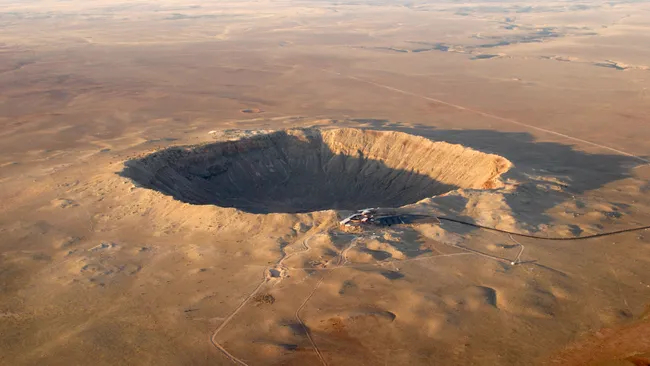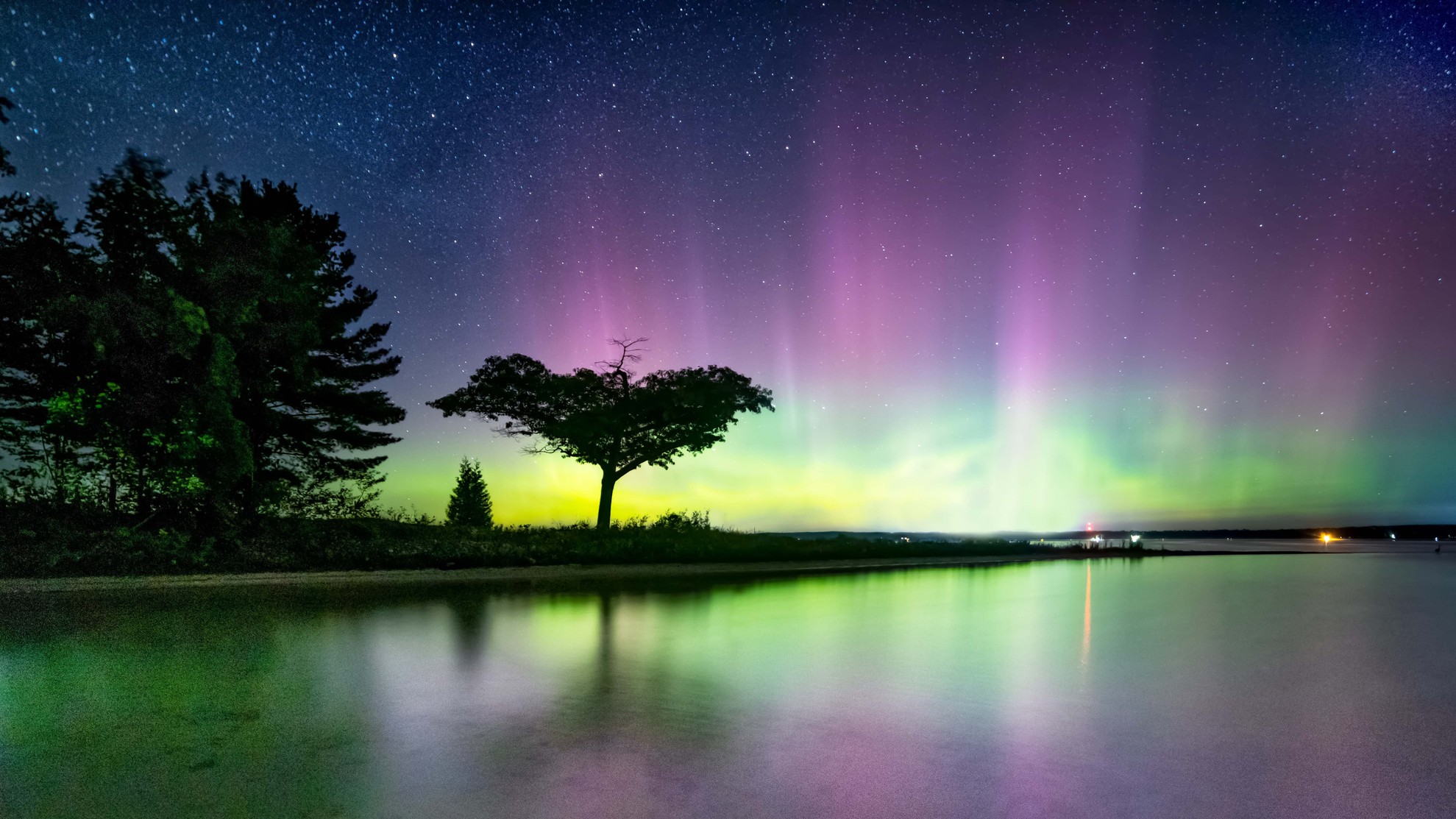Barringer Crater may have been formed by a cosmic 'curveball,' asteroid simulations show
Asteroids with different spins and bonding strengths may be responsible for the vast variety of impact craters on Earth, including Arizona's Barringer Crater, new simulations show.

Loosely-bound clumpy asteroids with curveball-like spins may have scooped out some of Earth's most distinctly shaped craters, including Arizona's bowl-like Barringer Crater, a study published Nov. 22 in the journal Physical Review E suggests. Craters carved by fast-spinning space rocks tend to be wider and shallower than those formed from their slower-spinning counterparts, the study authors found — a potentially counterintuitive finding if you've ever seen a curveball slam hard against a player's bat in a game of baseball.
Impact craters ― pock-marks created by space rocks ― scar the surface of most of the solar system's rocky bodies, from Jupiter's moon Io to our own home planet. But these traces of past celestial encounters have a bewildering diversity of shapes.
Take those on Earth. Some, like Arizona's 49,000-year-old Barringer Crater, resemble a bowl jammed in the ground. Others have more complicated architectures with one or more peaks around or even inside the crater.
Geologists have previously unearthed many factors responsible for this diversity, like an asteroid's velocity upon impact. But in the new study, researchers zeroed in on two typically overlooked parameters.
One was the asteroid's spin, or how quickly it rotates while whizzing through the atmosphere. Rotating objects have more energy than non-rotating ones. So it may seem intuitive that a spinning asteroid would gouge out a deeper crater than a non-spinning one.
Related: World's 1st mountaintop impact crater discovered in northeastern China
But what if the incoming impactors — whether comets, asteroids or smaller meteoroids — were made up of thousands of smaller bits glommed together through gravity? Recent NASA missions, like the OSIRIS-REx mission that collected samples from asteroid Bennu, have confirmed that not all asteroids are monoliths; many, especially the gargantuan ones that are a kilometer (half-a-mile) in size or larger, are actually clumps of smaller rocks glued together by gravity.
Get the Space.com Newsletter
Breaking space news, the latest updates on rocket launches, skywatching events and more!
Studying the spin and clumpiness of asteroids will help scientists "better understand how the different types of crater are formed, [and] how the material from the impactor spread[s] after collision has taken place," study co-author Erick Franklin, a researcher at Brazil's University of Campinas, said in an email to Live Science.
To investigate both factors, the researchers ran many simulations. They created virtual asteroid-like projectiles, each "the size of a grapefruit", Franklin said. Every projectile itself was a cluster of two thousand mite-sized spheres. The researchers then virtually dropped each of these "asteroids" on a grainy layer meant to resemble a planet's surface. In some models, the projectile's spin ranged between that of a super slow-spin splitter and an off-the-charts high-spin curveball.
The researchers found that rapidly rotating asteroids did gouge out narrow, deep gorges ― but only when the asteroid's tiny constituent spheres were tightly bound together. Fast spinning "rubble-piles" — asteroids like Bennu with weakly-bound components — produced wide, shallow holes. "Roughly speaking, the more the grains forming the projectile spread radially at the impact, the shallower and wider the crater will be," Franklin noted.
That's because part of the asteroid's energy is used to break the bonds holding its components together. This scatters the fragments, but leaves each with less energy, so they don't burrow as deeply into the ground as when the asteroid doesn't rotate. In addition to Barringer Crater, another potential curveball-created crater is the saucer-shaped Flynn Creek crater in Gainesboro, Tennessee, Franklin said.
Join our Space Forums to keep talking space on the latest missions, night sky and more! And if you have a news tip, correction or comment, let us know at: community@space.com.

Deepa Jain is a freelance science writer from Bengaluru, India. Her educational background consists of a master's degree in biology from the Indian Institute of Science, Bengaluru, and an almost-completed bachelor's degree in archaeology from the University of Leicester, UK. She enjoys writing about astronomy, the natural world and archaeology.

